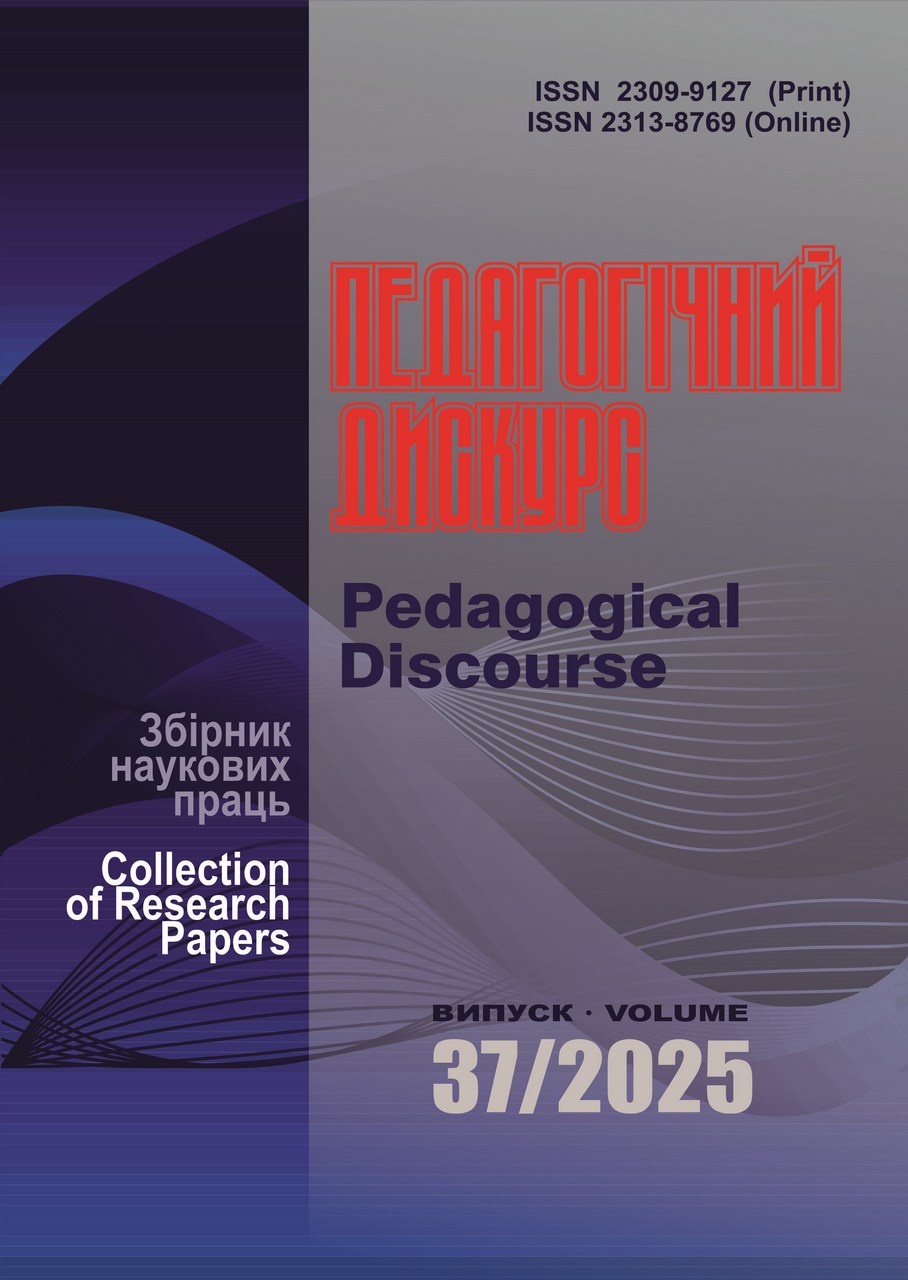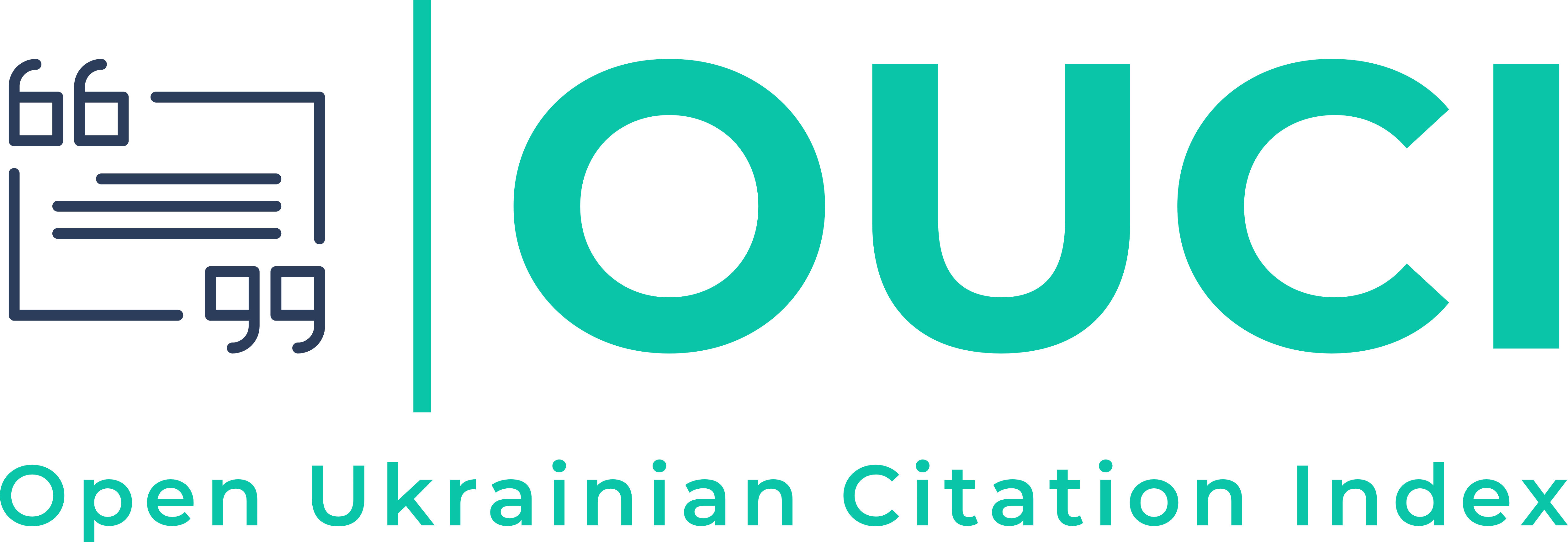Foreign Language Learning Practices and Attitudes among Ukrainian University Students
Abstract
This research investigates foreign language learning among tertiary students in Ukraine, emphasizing its relevance to improving language education in diverse contexts. The study aimed to identify key factors influencing students’ foreign language learning outcomes and practices. A specially designed questionnaire was administered to 643 students at Nizhyn Mykola Gogol State University, focusing on their attitudes, motivation, perceived necessity of foreign languages for future goals, and learning practices. The research employed a quantitative methodology, using descriptive and inferential statistics. Data analysis included correlation and regression analyses to determine predictors of foreign language learning success. The findings indicate that the majority of respondents perceive their foreign language knowledge as satisfactory or poor. Despite this, students generally exhibit a positive attitude toward foreign language learning, with many expressing a desire to improve and recognizing the importance of foreign languages for their future. Results revealed that the students’ positive attitudes toward foreign language learning are driven by the instrumental form of extrinsic motivation, which align foreign language learning with career and educational aspirations. However, a notable gap between positive attitudes and actual learning practices emerged, as only a small proportion of participants consistently dedicated time to improving their foreign language skills. The analyses highlighted satisfaction with foreign language knowledge, engagement in foreign language practice, and positive attitudes toward foreign languages as compulsory subjects as significant predictors of success. In contrast, factors such as gender, year of study, and perceived necessity of foreign languages for daily use or further education did not significantly impact outcomes. The study underscores the importance of aligning foreign language instruction with students’ real-world aspirations to sustain motivation and improve outcomes. Additionally, findings emphasize the value of personalized and interactive learning experiences, suggesting adjustments to curricula and educational policies to better meet learners' needs.
Downloads
References
Abdollahi-Guilani, M., & Nazari, A. (2015). Motivation and attitude towards learning English: A case study of Rasht Islamic Azad University. Modern Journal of Language teaching Methods (MJLTM), 4 (5), 585–595. Retrieved from https://www.academia.edu/32781170/Modern_Journal_of_Language_teaching_Methods_MJLTM_MOTIVATION_AND_ATTITUDE_TOWARDS_LEARNING_ENGLISH_A_CASE_STUDY_OF_RASHT_ISLAMIC_AZAD_UNIVERSITY [in English]
Abdullah, H. I., & Shah, P. M. (2014). Motivation and attitudes towards learning English among undergraduates in National University of Malaysia (UKM). International Journal of English and Education, 3 (4), 209–227. Retrieved from https://www.academia.edu/29667524/International_Journal_of_English_and_Education_Motivation_and_Attitudes_towards_Learning_English_among_Undergraduates_in [in English]
Abolfazli, Z., & Sadeghi, K. (2019). Iranian language learners’ attitudes towards teaching/learning English: The role of university major, gender, and age. Journal of Modern Research in English Language Studies, 5 (1), 1–26. http://dx.doi.org/10.30479/jmrels.2019.10399.1297 [in English]
Al Noursi, O. (2013). Attitude towards learning English: The case of the UAE Technological High School. Educational Research, 4 (1), 2141–5161. Retrieved from https://www.academia.edu/4290818/Attitude_towards_Learning_English_The_Case_of_the_UAE_Technological_High_School [in English]
Alkaff, A. A. (2013). Students’ attitudes and perceptions towards learning English. Arab World English Journal, 4 (2), 106–121. Retrieved from https://www.google.com.ua/url?sa=i&rct=j&q=&esrc=s&source=web&cd=&cad=rja&uact=8&ved=0CAIQw7AJahcKEwjg4YTD656AAxUAAAAAHQAAAAAQAw&url=https%3A%2F%2Fwww.awej.org%2Fimages%2FAllIssues%2FVolume4%2FVolume4Number2June2013%2F8.pdf&psig=AOvVaw2JkWsMFyJLTWpXq7T3i9Zz&ust=1689995915942232&opi=89978449 [in English]
Arslan, M. U., & Akbarov, A. (2012). EFL learners perceptions and attitudes towards English for the specific purposes. Acta Didactica Napocensia, 5 (4), 25–30. Retrieved from https://eric.ed.gov/?id=EJ1054457 [in English]
Baker, C. (1992). Attitudes and Language. Multilingual Matters. [in English]
Bolitho, R., & West, W. (2017). The internationalization of Ukrainian universities: the English language dimension. British Council Ukraine. Retrieved from https://www.google.com.ua/url?sa=t&rct=j&q=&esrc=s&source=web&cd=
&cad=rja&uact=8&ved=2ahUKEwjikcPC756AAxUPR_EDHTixCdYQFnoECA4QAQ&url=https%3A%2F%2Fwww.britishcouncil.org.ua%2Fsites%2Fdefault%2Ffiles%2F2017-10-04_ukraine_-_report_h5_en.pdf&usg=AOvVaw3lTeO1UBQkYk25SmY41N8E&opi=89978449 [in English]
Brown, H. D. (2007). Principles of language learning and teaching (5th ed.). Pearson Education. [in English]
Burstall, C. (1975). Factors affecting foreign-language learning: A consideration of some recent research findings. Language Teaching, 8 (1), 5–25. http://dx.doi.org/10.1017/S0261444800002585 [in English]
Cook, V. (2016). Second language learning and language teaching (5th ed.). Routledge. [in English]
Crookes, G., & Schmidt, R. W. (1991). Motivation: Reopening the research agenda. Language Learning, 41 (4), 469–512. https://doi.org/10.1111/j.1467-1770.1991.tb00690.x [in English]
De Bot, K., Lowie, W., & Verspoor, M. (2005). Second language acquisition: An advanced resource book. Routledge. [in English]
Dörnyei, Z. (1998). Motivation in second and foreign language learning. Language Teaching, 31, 117–135. https://doi.org/10.1017/S026144480001315X [in English]
Dörnyei, Z. (2001). Motivational strategies in the language classroom. Cambridge University Press. http://dx.doi.org/10.1017/CBO9780511667343 [in English]
Dörnyei, Z. (2005). The psychology of the language learner: Individual differences in second language acquisition. Routledge. https://doi.org/10.4324/9781410613349 [in English]
Dörnyei, Z., & Taguchi, T. (2010). Questionnaires in second language research: Construction, administration and processing (2nd ed.). Routledge. https://doi.org/10.4324/9780203864739 [in English]
Education First. (2022). English proficiency index: A ranking of 111 countries and regions by English skills. Retrieved from https://www.ef.com/epi [in English]
Gardner, R. (1985). Social psychology and second language learning: The role of attitude and motivation. Edward Arnold. [in English]
Gardner, R. C. (2006). The socio-educational model of second language acquisition: A research paradigm. EUROSLA Yearbook, 6 (1), 237–260. http://dx.doi.org/10.1075/eurosla.6.14gar [in English]
Gardner, R. C., & Lambert, W. E. (1972). Motivational variables in second language acquisition. In R. C. Gardner., & W. E. Lambert (Eds.), Attitudes and motivation in second language learning (pp. 119–216). Newbury House [in English]
Gömleksiz, M. N. (2010). An evaluation of students’ attitudes toward English language learning in terms of several variables. Procedia – Social and Behavioral Sciences, 9, 913–918. https://doi.org/10.1016/j.sbspro.2010.12.258 [in English]
Haddock, G., & Maio, G. R. (2007). Attitudes: Content, structure and functions. In M. Hewstone, W. Stroebe, & K. Jonas (Eds.), Introduction to social psychology: A European perspective, 4th ed., 112–133). BPS Blackwell Publishing. [in English]
Harmer, J. (2011). The practice of English language teaching (4th ed.). Pearson Longman. [in English]
Hromova, N. (2019). Students’ perceptions and motivation for learning foreign languages. Advanced Education, 6 (11), 76–83. http://dx.doi.org/10.20535/2410-8286.159810 [in English]
Karahan, F. (2007). Language attitudes of Turkish students towards the English language and its use in Turkish context. Journal of Arts and Sciences, 7, 73–87. https://www.researchgate.net/publication/285696531_Language_attitudes_of_Turkish_students_towards_the_English_language_and_its_use_in_Turkish_context [in English]
Kashefian-Naeeini, S., Aminlari, F., & Mousavi, H. (2018). An investigation into attitudes towards learning English and the motivation type (integrative vs. instrumental) in Iranian students at Universiti Kebangsaan Malaysia. International Journal of English Language & Translation Studies, 06 (03), 204–213. Retrieved from https://www.academia.edu/37830385/An_Investigation_into_Attitudes_towards_Learning_English_and_the_Motivation_Type_Integrative_vs_Instrumental_in_Iranian_Students_at_Universiti_Kebangsaan_Malaysia [in English]
Katesi, Y. Y. K. (1993). Some factors influencing language learning and their implication for language teaching. ITL – International Journal of Applied Linguistic, 2 (3), 101–139. https://doi.org/10.1075/itl.101-102.08kat [in English]
Khalid, A. (2016). A Study of the attitudes and motivational orientations of Pakistani learners toward the learning of English as a second language. SAGE Open, 6 (3). https://doi.org/10.1177/2158244016665887 [in English]
Khasinah, S. (2014). Factors influencing second language acquisition. Englisia: Journal of Language, Education, and Humanities, 1 (2). http://dx.doi.org/10.22373/ej.v1i2.187 [in English]
Kyiv International Institute of Sociology. (2023, March 16). Level of proficiency in English and other foreign languages in Ukraine: Results of quantitative sociological research conducted in December 2022 – January 2023 [Press release]. Retrieved from https://www.kiis.com.ua/?lang=eng&cat=reports&id=1210&page=1 [in English]
Martinović, A., & Poljaković, I. (2010). Attitudes toward ESP among university students. Fluminensia, 22 (2), 145–161. Retrieved from https://www.researchgate.net/publication/325819212_Attitudes_toward_ESP_among_university_students [in English]
Ministry of Education and Science of Ukraine. (2003). English for specific purposes (ESP) in Ukraine. A baseline study. Lenvit. [in English]
Moskalenko, O., Muravska, S., Didenko, O., & Biliavets, S. (2019). Defining the underlying factors of Ukrainian student pilots’ motivation to learn aviation English. Revista Romaneasca pentru Educatie Multidimensionala, 11 (2), 198–221. http://dx.doi.org/10.18662/rrem/125 [in English]
Mustafa, H., Rashid, M., Atmowardoyo, H., & Dollah, S. (2015). Students’ attitudinal factors in learning English as a foreign language. Journal of Language Teaching and Research, 6 (6), 1187–1194. http://dx.doi.org/10.17507/jltr.0606.05 [in English]
Nduwimana, A. (2019). Pure sciences students’ attitudes towards learning English: The case of University of Burundi. International Journal of Research in English Education, 4 (2), 1–13. https://doi.org/10.29252/IJREE.4.2.1 [in English]
Oroujlou, N., & Vahedi, M. (2011). Motivation, attitude, and language learning. Procedia – Social and Behavioral Sciences, 29, 994–1000. https://doi.org/10.1016/j.sbspro.2011.11.333 [in English]
Oxford, R. L., & Shearin, J. (1994). Language learning motivation: Expanding the theoretical framework. The Modern Language Journal, 78 (1), 12–28. https://doi.org/10.1111/j.1540-4781.1994.tb02011.x [in English]
Richards, J.C., & Schmidt, R. (2002). Longman dictionary of language teaching and applied linguistics (3rd ed.). Longman. [in English]
Shoaib, A., & Dornyei, Z. (2005). Affect in lifelong learning: Exploring L2 motivation as a dynamic Process. In P. Benson, & D. Nunan (Eds.), Learners’ Stories: Difference and Diversity in Language Learning, 22–41. Cambridge University Press. [in English]
Viet, V. (2017). Undergraduate students’ attitude towards learning English: A case study at Nong Lam University. VNU Journal of Science: Education Research, 33 (4). http://dx.doi.org/10.25073/2588-1159/vnuer.4119 [in English]
Wenden, A. (1991). Learner strategies for learner autonomy. Prentice Hall. [in English]
Yuefang, S. (2019). An analysis on the factors affecting second language acquisition and its implications for teaching and learning. Journal of Language Teaching and Research, 10 (5), 1018–1022. http://dx.doi.org/10.17507/jltr.1005.14 [in English]
Zadorozhna, I., & Datskiv, O. (2022). Motivation of pre-service English teachers to learn English as a foreign language in challenging circumstances. Advanced Education, 9 (21), 86–99. http://dx.doi.org/10.20535/2410-8286.261715 [in English]
Copyright (c) 2025 Pedagogical Discourse

This work is licensed under a Creative Commons Attribution-NonCommercial-ShareAlike 4.0 International License.

















